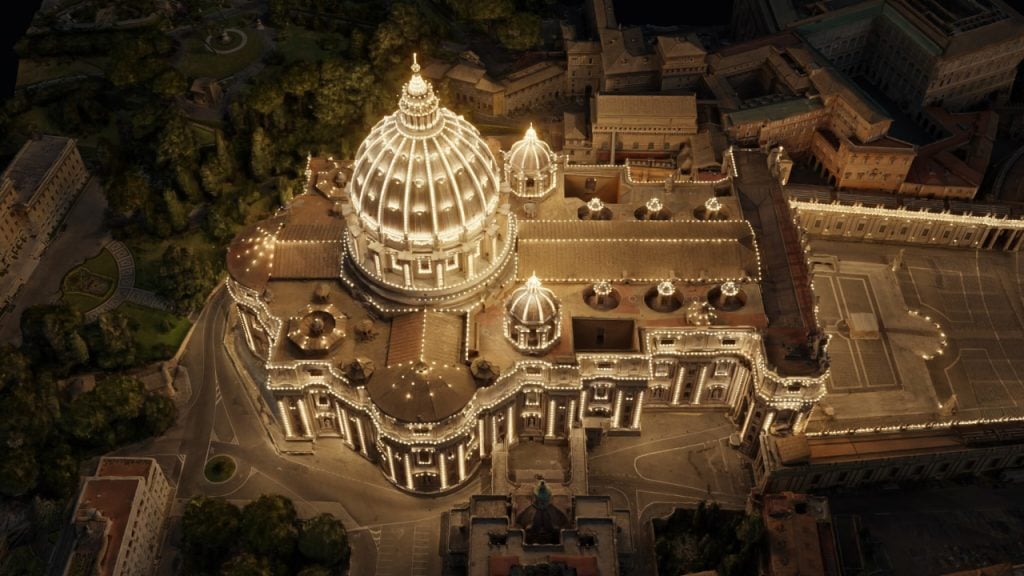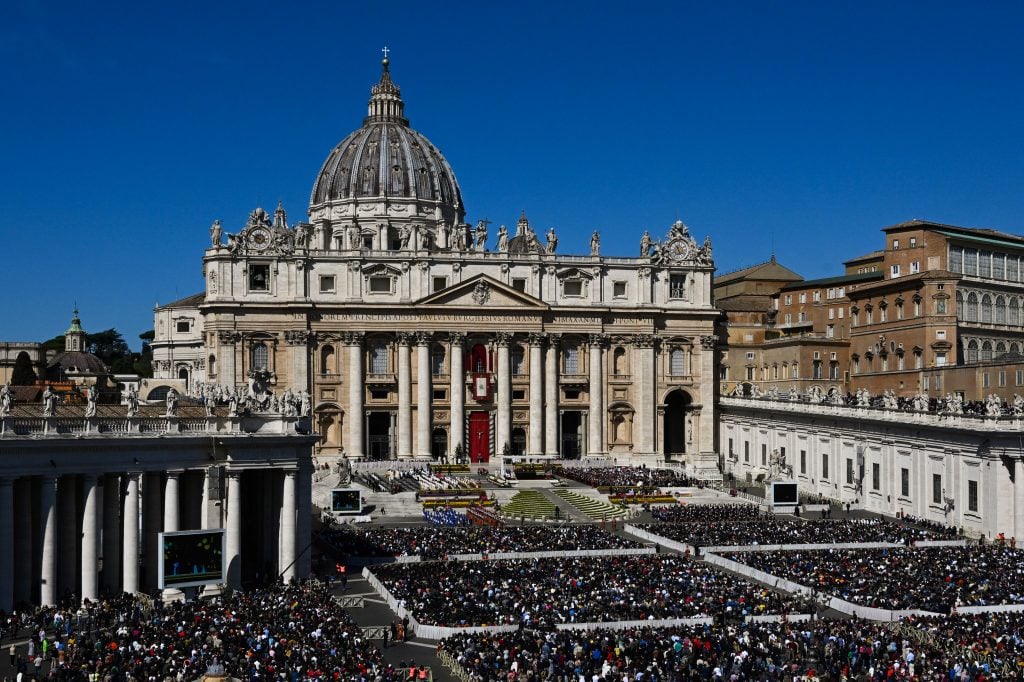Art & Tech
You Can Now Tour an A.I.-Enhanced ‘Digital Twin’ of a 16th-Century Vatican Church
The project was built out of 400,000 images taken by drones and cameras.

It’s now possible to wander the St. Peter’s Basilica in the Vatican emptied of tourists and worshippers. This comes courtesy of A.I. technology which has been used to create a digital twin of the 16th-century Baroque masterpiece.
The product of a partnership between the Vatican, Microsoft, and Iconem, a French cultural preservation startup, the digital replica has been created by stitching together 400,000 high-resolution photographs. The model was captured over a period of three weeks by Iconem using cameras, drones, and lasers.

The process of creating a digital twin of St. Peter’s Basilica. Photo: Microsoft.
The project’s goal is to make the Basilica accessible to anyone with an internet connection. It offers an immersive experience that allows people to explore all of the building—from its soaring domed ceiling, to its paintings by Michelangelo and Bernini, to its most remote corners.
“This is an opportunity to use the power of artificial intelligence to see this Basilica in a way that perhaps no previous generation has seen it before,” said Brad Smith, Microsoft’s president, in a statement. “It’s a digital twin and future generations will see it as part of their cultural heritage, using A.I. in this way is a way to bring out the best in humanity.”
The digital twin is being released alongside two new onsite exhibitions as well as an online platform that allows the roughly 40,000 daily visitors to book entry times, a move aimed at reducing the long lines that typically snake out of the Basilica.

St. Peter’s Basilica during the Pope’s Easter Sunday mass in 2023 at St. Peter’s square in the Vatican. Photo: Andreas Solaro / AFP via Getty Images.
The project may also serve a conservation function. A.I. analysis of the data can be used to identify cracks that exist in the Basilica, as well as smaller details, such as which mosaic tiles are missing or damaged. Microsoft has worked on similar A.I. projects with Mont Saint-Michel in Normandy and the ruins of Ancient Olympia in Greece; its 3D model of Notre-Dame Cathedral has proven essential in its reconstruction following the 2019 fire.
At the unveiling of St. Peter’s Basilica’s digital twin on November 11, Pope Francis called on leveraging technology to serve the Holy See’s mission. “This house of prayer for all peoples has been entrusted to us by those who have preceded us,” Francis said. “It is a gift and a task to care for it, in both a spiritual and a material sense, even through the latest technologies.” Francis discussed the need for ethical A.I. in his 2023 World Message of Peace address.

The reveal of the St. Peter’s Basilica A.I.-enhanced experience at the Vatican, 2024. Photo: Andreas Solaro / AFP via Getty Images.
The project has been launched as part of Jubilee Year 2025, a once-every-quarter-century Vatican event designated as a special year of grace by the Catholic Church. It drives millions of pilgrims to Rome and unlocks special Jubilee funding to be spent on infrastructure projects.





